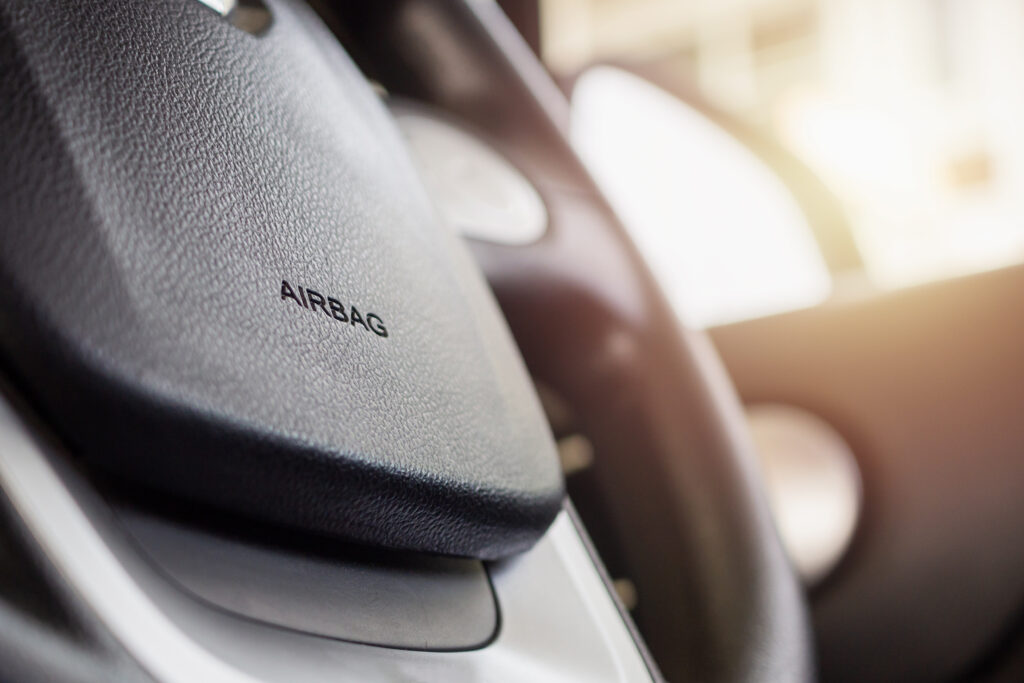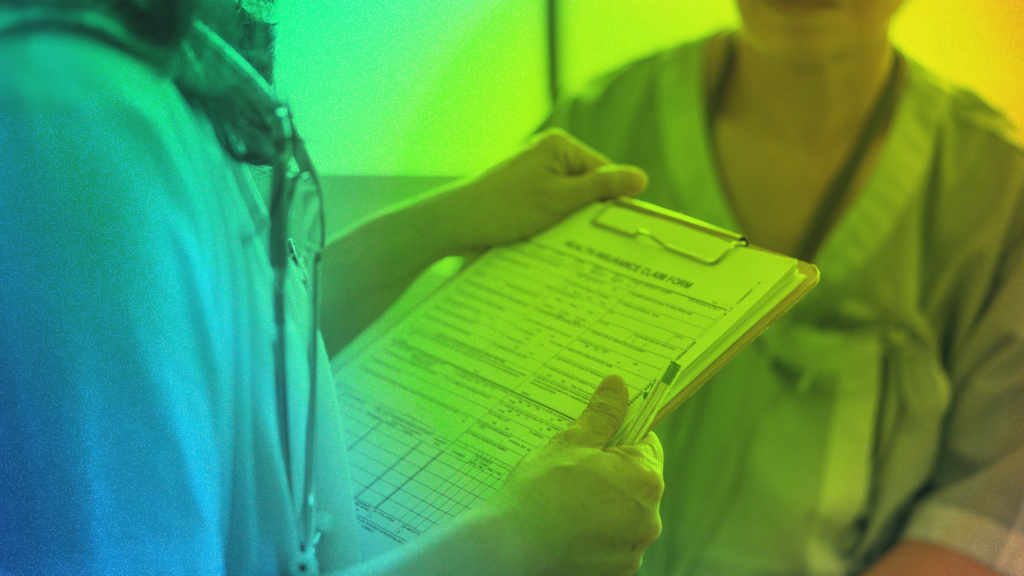Philips CPAP Machine Attorneys
CPAP machines are designed to help those with sleep apnea breathe consistently throughout the night so they can get uninterrupted sleep. However, Philips Respironics’ CPAP machine was found to have defective polyurethane foam that could result in black particles getting into the airways of the device, causing health complications. As a result, Philips recalled several types of CPAP machines and other breathing devices in June, 2021.
Home » Defective Medical Device Attorneys » Philips CPAP Machine Attorneys
Although the company voluntarily recalled the devices and is working with the FDA, the company is still facing lawsuits that claim Philips knew about the defects years before, but only warned consumers and recalled the affected devices in 2021.
The FDA has warned that the defective CPAP machines could cause lung injuries or even cancer. If you or a loved one has been affected by a recalled Philips CPAP machine or another breathing device, don’t hesitate to contact Farah & Farah for a free consultation. You may have a case against Philips and be eligible for compensation and damages.
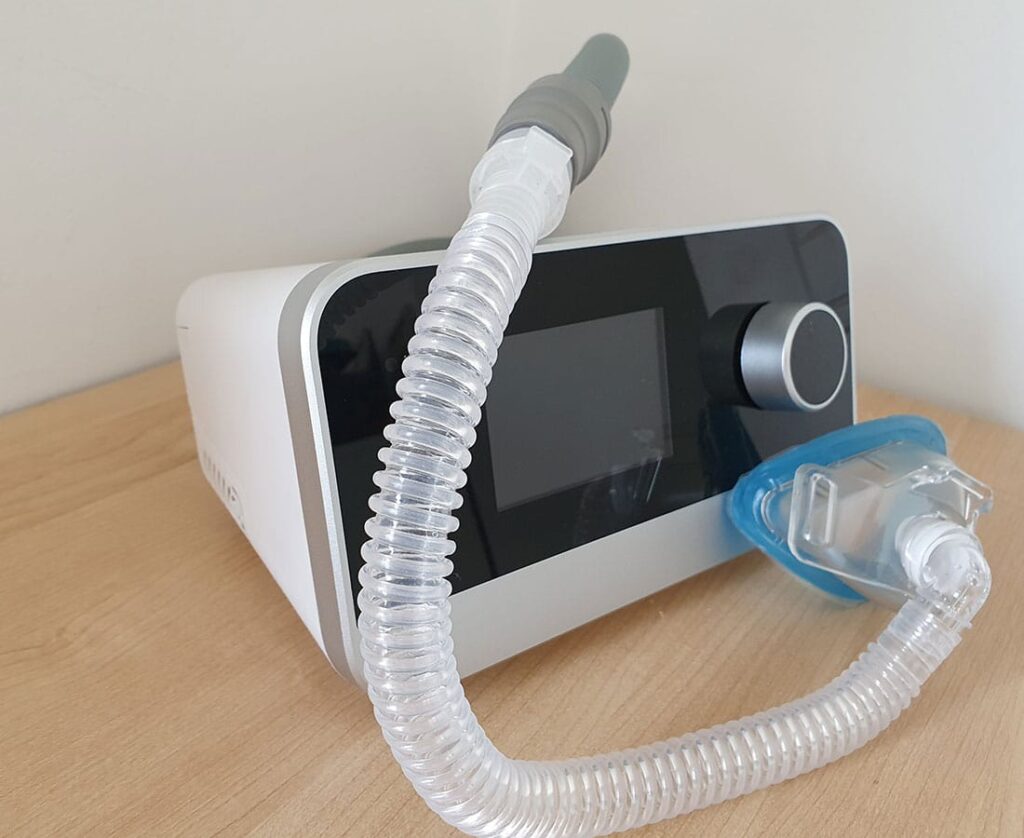
Should I Consider a Philips CPAP Machine Lawsuit?
If you or a loved one has experienced lung injuries or developed cancer as a result of using a recalled CPAP machine or another recalled device manufactured by Philips Respironics, you may have a case against the company. A lawsuit already filed against Philips Respironics claims that the company knew about the defects in their CPAP machines for years, but only warned consumers about them in late April of 2021 and only recalled them in June 2021. The lawsuit seeks to hold the company responsible for damages and to replace the defective devices with safe ones.
Our team of professional and highly skilled attorneys has experience taking on medical device manufacturers who put profits above people. If you have experienced health complications because of a defective CPAP machine by Philips Respironics, contact Farah & Farah today for a free consultation. You won’t have to pay a thing unless your case is successful.
What Is a CPAP Machine?
A CPAP machine is a breathing machine that is commonly prescribed to patients with sleep apnea. The letters CPAP stand for continuous positive airway pressure. The machines provide a continuous airflow to a sleeping person through both the mouth and nose in order to help that person breathe normally while sleeping.
What Is a CPAP Machine Made of?
All types of CPAP machines have similar components, which include:
- A base unit housing a motor
- A mask (cushioned)
- A headgear frame for the mask
- A tube connecting the mask to the motor
- Adjustable straps for the mask and headgear frame
- Elbow joints
There are three types of masks: a full mask that covers your mouth and nose, a nasal mask that covers the nose and area around it, and a nasal pillow mask that has prongs that fit into the nose. The type of mask prescribed depends on the needs of the person using it.
How Does a CPAP Machine Function?
A CPAP machine works by generating pressurized air in the compressor. The compressor is the motor that is located inside the base of the machine. The pressurized air passes first through an air filter and then moves through the tube in a continuous stream. This continuous stream of filtered, pressurized air reaches the patient’s airways through the mask, pushing past any blockages that exist to reach the lungs. This way the machine keeps a person’s airways open so that they’re always receiving oxygen and don’t wake up in the middle of the night because they can’t breathe.
Are There Other Types of Breathing Machines?
A CPAP machine isn’t the only type of breathing machine. There are two other types of common breathing machines: APAP and BiPAP. The three types of breathing machines differ primarily in how the machine pressurizes the air. With a CPAP machine, the compressor produces air at one continuous pressure level while the other types of machines have different pressure settings.
WHAT IS AN APAP MACHINE?
An APAP machine adjusts the pressure of the air to match your breathing. APAP stands for automatic positive airflow pressure. The machine monitors the patient’s breathing as they sleep and automatically adjusts the pressure of the air as needed.
WHAT IS A BIPAP MACHINE?
A BiPAP machine has two different pressure settings for the airflow. One of these settings is for when inhaling. The second is a lower pressure setting for when exhaling. BiPAP stands for bi-level positive airflow pressure and this machine is typically used by people who have higher levels of carbon dioxide in their blood or who for any reason can’t use a CPAP machine.
BiPAP machines also can come with a backup respirator. Because of this, they’re often used by people who have central sleep apnea because the backup respirator can help to ensure that the person is able to initiate breathing while sleeping.
What Are the Benefits of Using a CPAP Machine?
People using a CPAP machine or another breathing machine will have been prescribed the machine to treat sleep apnea. Therefore, if you use a CPAP machine, your doctor considers it necessary for your health. The benefits of using a CPAP machine can include:
- Helps you to sleep without waking up
- Helps you to breathe continuously throughout the night
- Reduces sleepiness during the day
- May help to reduce levels of blood glucose
- May help to reduce levels of cholesterol
- May help to reduce the risk of a heart attack
- May help to reduce the risk of a stroke
Side Effects of Using a CPAP Machine
Like any medical device, CPAP machines usage may result in side effects and complications. The side effects of using a CPAP machine have in some cases stopped people from using it. These side effects include:
- Discomfort while falling asleep
- Difficulty falling asleep
- Dry mouth
- Nasal congestion
- Feelings of claustrophobia
- Feelings of anxiety
- Nosebleeds
- A bloated feeling
- Sores or other skin irritation anywhere the mask is in contact with the face
- Infections
- Dizziness
- Lung discomfort
- Shortness of breath
Some of these side effects, such as infections, can be avoided if the CPAP machine is properly cleaned on a regular basis.
Who Makes CPAP Machines?
A variety of different companies manufacture CPAP machines. However, there are two companies that lead in the CPAP machine market: Philips Respironics and ResMed. Other companies in the market that come in behind Philips Respironics and ResMed are Devilbiss and Fisher & Paykel.
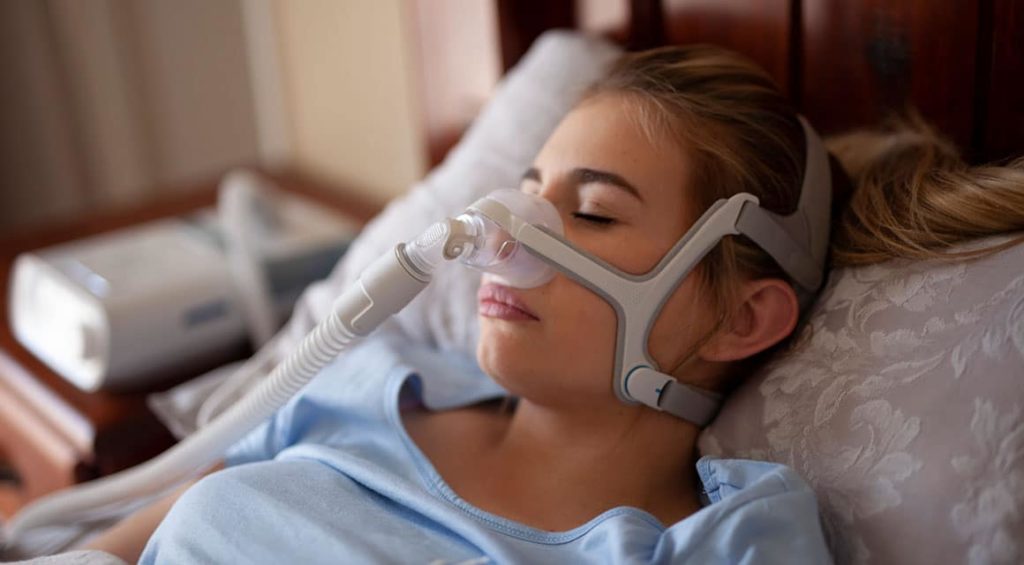
Philips Respironics
Respironics was a medical supply company that was founded in Pennsylvania in 1976. Its focus was on products that improved breathing. The company began manufacturing CPAP machines in 1985. Respironics remained an independent company until 2007 when it merged with Philips to become Philips Respironics. Philips Respironics still makes CPAP machines, as well as BiPAP machines, ventilators, asthma solutions, infant apnea monitors, and other breathing devices.
What Is Sleep Apnea?
Sleep apnea is a sleep disorder. People who have sleep apnea repeatedly stop and start breathing throughout the night. People who have sleep apnea typically snore and will also still feel tired even after getting a full night’s sleep. There are three different kinds of sleep apnea:
- Obstructive sleep apnea
- Central sleep apnea
- Complex sleep apnea syndrome
What Is Obstructive Sleep Apnea?
Obstructive sleep apnea is the most commonly occurring type of sleep apnea. Obstructive sleep apnea happens when the throat muscles relax periodically and block the airways. This causes the person to repeatedly stop and then restart breathing throughout the night.
SYMPTOMS OF OBSTRUCTIVE SLEEP APNEA
The symptoms of obstructive sleep apnea include:
- Loud snoring
- Excessive sleepiness during the day
- Headaches in the morning
- Waking up with a dry mouth
- Waking up with a sore throat
- Waking abruptly gasping
- Waking abruptly choking
- Sweating at night
- Trouble concentrating
- High blood pressure
- Lower libido
- Mood changes
- Depression
- Irritability
- Someone else observing stopped breathing while sleeping
If you experience any of the following symptoms, you should speak to your doctor:
- Snoring that is loud enough to disturb either your own sleep or others’ sleep
- Periodic pauses in your breathing while you sleep
- If you wake up either choking or gasping
- Drowsiness during the day so severe that you’re at risk for falling asleep while working, driving, or other activities
Snoring isn’t always a sign of sleep apnea, even if it’s loud, so you should pay attention to how you are snoring. If you snore louder while sleeping on your back than you do on your side, or if the snoring is periodic, with intermittent periods of quiet, then it may be a sign of sleep apnea.
CAUSES OF OBSTRUCTIVE SLEEP APNEA
Obstructive sleep apnea is caused by the relaxation of the muscles that are in the back of the throat. These muscles are used by the uvula, soft palate, tongue, and tonsils. When these muscles relax at night when they shouldn’t, the airway narrows or even closes altogether when you inhale. This narrowed or closed airway impedes the breathing process and results in a lower level of oxygen in the blood, which in turn can result in a higher level of blood carbon dioxide.
Sleep apnea impairs sleep because the brain senses when normal breathing functions are impaired. The brain wakes you up from sleep just enough to reopen the airway to facilitate breathing. The awakenings happen periodically throughout the night and while they’re usually quick enough that you’re unaware of them. However, waking up even for such brief periods of time throughout the night still interferes with your sleep, leaving you tired the next day.
RISK FACTORS OF OBSTRUCTIVE SLEEP APNEA
Obstructive sleep apnea can happen to anyone. There are some factors, however, that can increase the risk:
- Inherently narrow airway
- Being overweight or obese
- Hypertension
- Smoking
- Diabetes
- Asthma
- Family history of having sleep apnea
- Gender (men are more at risk)
- Chronic nasal congestion
COMPLICATIONS OF OBSTRUCTIVE SLEEP APNEA
Obstructive sleep apnea can cause the following complications:
- Risk of heart attack
- Risk of stroke
- Risk of heart failure
- Risk of coronary artery disease
- Fatigue
- Sleepiness during the day
- Eye complications such as glaucoma
- Difficulty breathing after surgery
- Greater risk of complications in surgery
- Greater risk of complications with medication
- Causing sleep deprivation in a partner
What Is Central Sleep Apnea?
The second type of sleep apnea is called central sleep apnea. It’s similar to obstructive sleep apnea in that you periodically stop and start breathing during sleep, but the cause of the interruption in breathing is different. Central sleep apnea is less common than obstructive sleep apnea and is caused by the brain failing to send the proper signals to the muscles that control your breathing.
SYMPTOMS OF CENTRAL SLEEP APNEA
The symptoms of central sleep apnea can include:
- Waking abruptly short of breath
- Snoring
- Low tolerance for exercising
- Sleepiness during the day
- Difficulty falling asleep
- Changes in mood
- Chest pain at night
- Shortness of breath that feels better after sitting up
- Headaches in the morning
- Trouble concentrating
- Someone else observing stopped breathing
- Someone else observing abnormal breathing
Just like with obstructive sleep apnea, snoring is a symptom of central sleep apnea. However, central sleep apnea snoring is less likely to be as prominent. Snoring is more commonly caused by obstructive sleep apnea because it actually obstructs the airway, while central sleep apnea does not.
You should see a doctor if you are experiencing excessive sleepiness during the day, to the point where you may be falling asleep while working, driving, or performing other activities. If you can’t stay asleep, are awoken from sleep by shortness of breath, or if you stop breathing during sleep, you should speak to your doctor about sleep apnea.
CAUSES OF CENTRAL SLEEP APNEA
Central sleep apnea is typically caused by another health condition but can be caused by a variety of things, including:
- Medications (such as opioids)
- High altitude
- Congestive heart failure
- Congestive heart failure
- Kidney failure
- Use of a CPAP machine
RISK FACTORS OF CENTRAL SLEEP APNEA
The following factors may put someone at higher risk of developing central sleep apnea:
- Age (older than 65)
- Gender (males are at higher risk)
- Stroke
- Heart conditions
- Brain tumors
- Structural brainstem lesion
- Opioid use
- Use of a CPAP machine
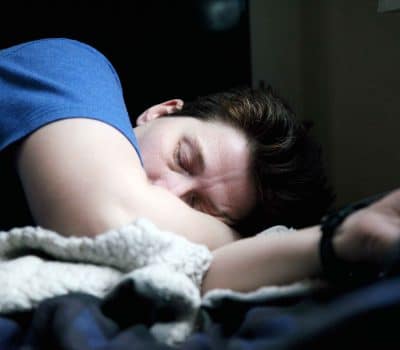
COMPLICATIONS OF CENTRAL SLEEP APNEA
Central sleep apnea can result in further health complications. These include fatigue, as sleep is continually interrupted even if the patient isn’t aware of it. Central sleep apnea can also result in cardiovascular issues. If you already have a cardiovascular problem that causes central sleep apnea, the sleep apnea can in turn make the cardiovascular condition worse.
What Is Complex Sleep Apnea Syndrome?
Complex sleep apnea syndrome is the combination of both obstructive sleep apnea and central sleep apnea. Complex sleep apnea syndrome is also known as treatment-emergent central sleep apnea because it results from treating obstructive sleep apnea. Someone who has obstructive sleep apnea and then treats it with a CPAP machine can then also develop central sleep apnea. In this case, central sleep apnea only emerges from the treatment of obstructive sleep apnea.
Philips CPAP and BiPAP Machine Recalls
In June of 2021, the FDA announced that Philips Respironics had recalled several devices, including certain CPAP and BiPAP machines, as well as some ventilators. The affected devices were recalled due to health risks caused by the polyurethane foam used in the machines to reduce both sound and vibrations. In the affected devices, the foam could break down and then enter into the device’s tube. If this happened, then the user of the CPAP or BiPAP machine could inhale or swallow black debris from the foam. The foam could also release chemicals into the pressurized air stream of the device. The recall affected about 4 million CPAP machines and other devices.
Health Complications From Affected CPAP Machines
Philips Respironics recalled some of their CPAP machines because they received reports of health complications due to the black particles from the foam getting into the air. The health complications reported by Philips Respironics include:
- Headache
- Upper airway irritation
- Cough
- Chest pressure
- Sinus infection
- Dizziness
- Skin, eye, and respiratory irritation
- Asthma
- Carcinogenic effects on organs like the liver and kidneys
- Nausea
- Vomiting
- Hypersensitivity
The FDA reported that the health complications could result in death but that as of June 2021, no deaths due to defective CPAP machines had been reported.
According to the FDA, the possible injuries that could result from the use of one of the defective devices could be serious, or even life-threatening.
Recalled CPAP Machines Linked to Cancer Risks
The FDA recall notice regarding Philips Respironics listed carcinogenic effects among the possible side effects of the defective devices. Something that is carcinogenic is cancer-causing. This means that there is a risk that using a defective Philips CPAP machine could have resulted in cancer.
Recalled CPAP Machines Linked to Lung Injuries
Because the black particles from the foam would be inhaled if a defective CPAP machine was used, there’s also a risk of lung injuries. The FDA’s recall notice also warned about respiratory irritation, as well as cough, sinus infections, chest pressure, and asthma.
Philips CPAP Machine Lawsuits
A class-action lawsuit against Philips Respironics has been filed in Massachusetts. Philips recalled the affected devices and worked with the FDA to warn people who might be affected by the dangers. Philips and the FDA also outlined steps that people using affected devices should take to seek medical treatment for any injuries from the devices and encouraged patients to discuss alternative treatments for their sleep apnea or other medical condition with their doctors. However, the lawsuit claims that Philips Respironics was aware of the problem with the polyurethane foam in the affected CPAP machines and other devices for many years, but did not warn the public about any dangers with their recalled devices until the end of April 2021 and did not actually issue the recall until June of 2021.
The lawsuit seeks damages for patients who were harmed by the Philips Respironics CPAP machines and other devices and also for Philips to replace the recalled devices at no cost to the patient with devices that are safe to use.

If you or a loved one has suffered health complications such as lung injuries or cancer due to a recalled Philips Respironics CPAP machine or another device, you may have a case against the company. Contact Farah & Farah for a free consultation today.

free case review
Client Testimonials

Related Blogs







